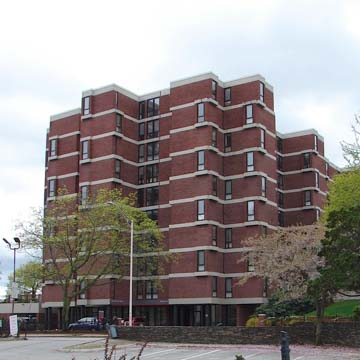As dean of the School of Architecture at Yale University, Paul Rudolph was influential in the design of large, multiple-unit housing projects during the 1960s. He and others rebelled against the monotony, inflexibility, and impersonality of the elemental building shapes preferred by earlier modernists for apartments and mass housing. Influenced especially by Le Corbusier's emphasis, in his late Unité apartment houses, on defining the unit within the
You are here
Beneficent House
1963–1969, Paul Rudolph. 1 Chestnut St.
If SAH Archipedia has been useful to you, please consider supporting it.
SAH Archipedia tells the story of the United States through its buildings, landscapes, and cities. This freely available resource empowers the public with authoritative knowledge that deepens their understanding and appreciation of the built environment. But the Society of Architectural Historians, which created SAH Archipedia with University of Virginia Press, needs your support to maintain the high-caliber research, writing, photography, cartography, editing, design, and programming that make SAH Archipedia a trusted online resource available to all who value the history of place, heritage tourism, and learning.

